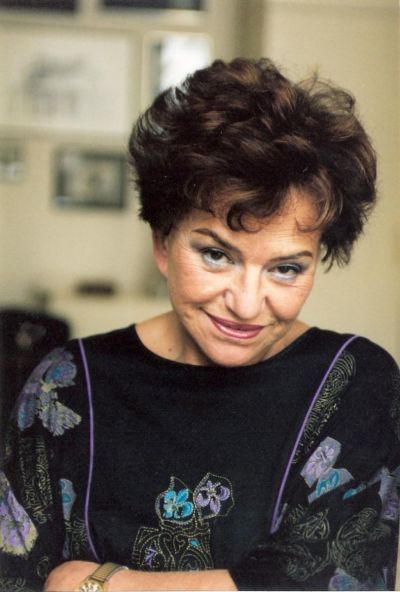Helena Bohle-Szacki

Helena began a new phase in her life in the 1950s when she started working at "Dziennik Łódzki" (the Lodz daily newspaper). Initially, to earn some extra money, she writes articles on fashion and beauty. She offers her readers advice on fashion outfits for New Year's Eve, for example, and gives tips on how to comb your hair so that "your hairstyle is fashionable and suits your face". She also reports on fashion shows and the latest trends that were to become an expression of personal freedom, especially after the death of Stalin. In addition to her articles, she also publishes styling sketches and illustrations. It is not long before she begins to work with the most prestigious fashion magazines, including "Uroda" and "Moda". In 1957 Helena (her surname is still Urbanowicz) took up work as the artistic director of the fashion house "Telimena" in Łódź Under her leadership the company begins to develop into a serious competitor for the then only important fashion design house, "Moda Polska". The latest collections organised by Helena at prestigious venues are celebrated in the press as" major fashion reviews". On one of her increasingly frequent trips to Warsaw she meets Wiktor Szacki. She leaves her husband for him and moves to the capital.
The changes in her private life are also followed by a change of job. In 1963 Helena Bohle-Szacka joins "Moda Polska", where she takes up a position as chief fashion designer. Her collections herald a turning-point in the perception of the fashion world which until then had not enjoyed much social recognition. Fashion shows are now held in popular cafés or clubs and capture the nerve of young people dancing to beat music. Nonetheless, due to disputes with her superior, Helena switches to a competitor - the fashion company "Leda", where she takes over as artistic director. In all this time she is expanding her contacts abroad. In 1965 a fashion show displaying her collection is held in the famous Europa-Center in West Berlin, and is enthusiastically received by the German press. At the time Helena Bohle-Szacka still had no idea that Berlin would become her new home just three years later - but not on her own initiative.
West Berlin is to be only a stopover on the way to London, where the Szacki couple plan to take up permanent residence. Tired of the anti-Semitic campaign launched by the communist authorities, they leave Poland in December 1968. They do not take too much with them: a few personal things and clothes as well as a silver powder box Helena received from her employees at "Leda". The powder box contains a dedication: "To our dear Lilka – your friends at Leda. Warsaw, 10.12.68". They also manage to smuggle diplomas and work certificates across the border in a tobacco box, items which they are not officially allowed to take with them.
Helena is entitled to compensation for her suffering during the war. However, since the formalities are lengthy, the couple decides to settle permanently in Berlin. Wiktor Szacki, a chemist by profession, will be employed at the Institute of Nuclear Physics, and for some time he will also work for Radio Free Europe. Helena, on the other hand, who has been looking for a job for a long time, soon realizes that she is no longer the star of the fashion world beyond the Iron Curtain, but a poor immigrant from the East. Her former contacts in the German fashion world are of little use to her. So Helena earns a little extra by giving painting and interior design courses at the adult education centre, and sews skirts for a textile company in piecework. Three years later, she finally takes up a teaching position at the Lette School in Berlin. Here she works as a lecturer in graphic composition and visual communication. The background to getting the job is interesting: the students advocate her for the post instead of a German candidate. During this time, Helena Bohle-Szacki also created graphics and drawings. Now she rarely deals with fashion anymore.


